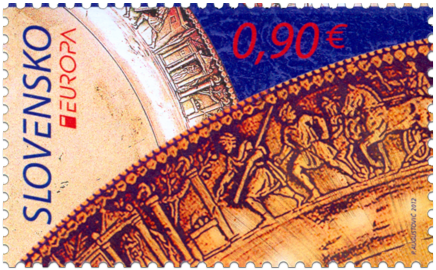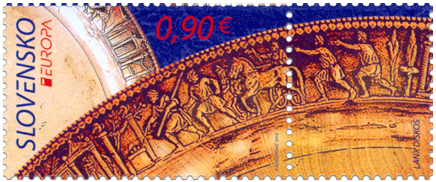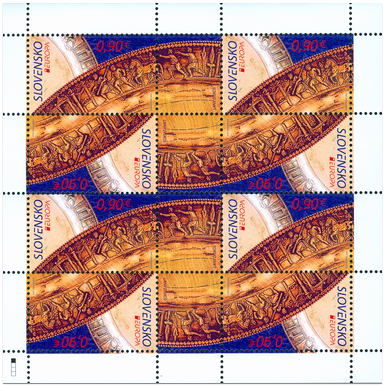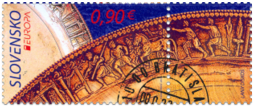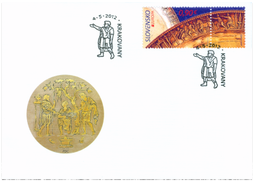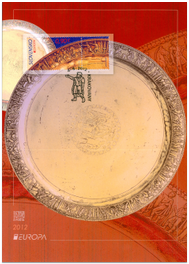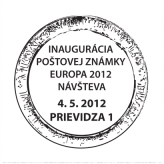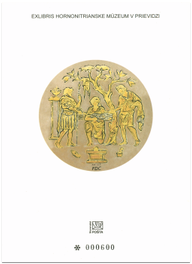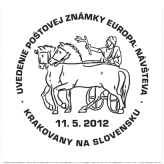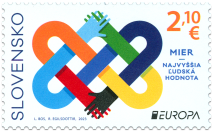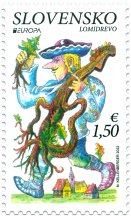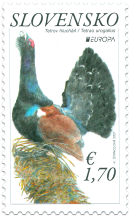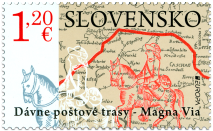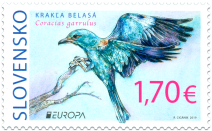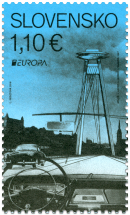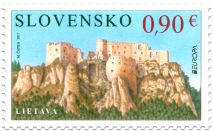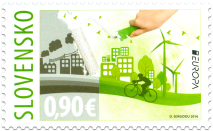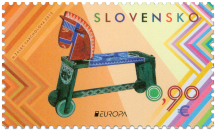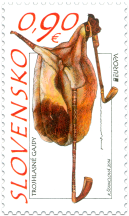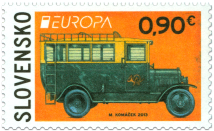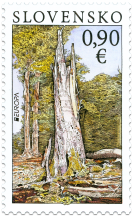515 Date of issue
04.05.2012 Face value
0.90 €
The stamp depicted the oldest known motif of the phenomenon “visit...” in the history of Slovakia. It does not only represent the visit of another country, i.e. travelling, which is rather popular today, but also the visit of a pilgrim’s place or a visit of a monument. The postage stamp displays a part of the embossed decoration of a Roman plate, the so-called lanx diskos from the 2nd century which was a part of the equipment of a randomly discovered tomb of a Germanic chief in Krakovany during an excavation of clay in the brickworks of Stráže from 1933 – 1938. The decoration of silver plate depicted various stories from the beginning of Roman history; especially the events connected with the expulsion of the last Etruscan king in Rome, Tarquinius Superbus, in 509 BC.
On the postage stamp is a scene of visit king’s sons, Titus, Aruns and their cousin Lucius Junius Brutus (in a carriage), to the Temple of Apollo in Delphi. They travelled to Greece for the prophecy on who would be the king after the death of Tarquinius Superbus. Oracle Pythia prophesied that it would be the one who kissed the mother first. While the brothers were drawing lots on who would have the honour to do after arriving to home, Brutus understood the meaning of Pythia’s words and kissed “the Mother Earth”. After returning to Rome, an uprising against the king broke out, led by Lucius Junius Brutus, who became the first consul of the Republic of Rome and the prophecy came true. The ceremony of oath connected with the protection of the republic located in the centre of the plate is actually the main motif of FDC. The discovery of this extraordinary item in the territory of Slovakia confirms the fact that Slovakia has never been on the periphery of cultures. Not even during Ancient Rome whose borders stretched until the Danube and the Romans were visiting the Germans and gave them exclusive diplomatic presents in order to keep their favour.
The displayed artefact from our art history implies various important messages. It does not only mean the popularisation of our cultural heritage abroad, because we know only two plates all over the world, but it may lead to visiting our regional museums e.g. Hornonitrianske museum in Prievidza which has this plate in its collection.
Martin Vančo
© 2024 POFIS - Postal philatelic service. All rights reserved

